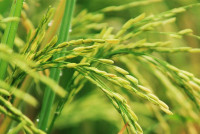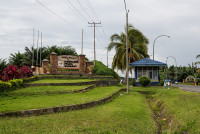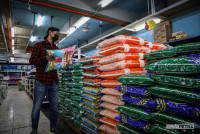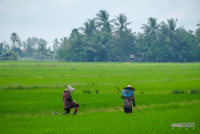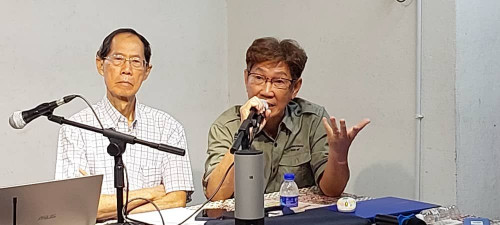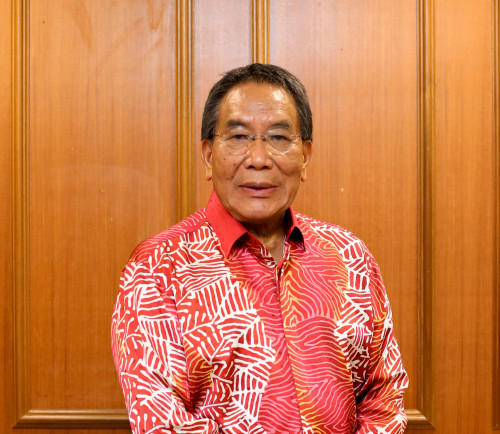A TEAM of researchers who set out to develop a disease-resistant, higher-yielding rice variety was pleasantly surprised when serendipity played a hand in the laboratory.
The team led by plant scientist Professor Dr Wickneswari Ratnam got more than they bargained for when their genetic mix and match of two rice varieties unwittingly yielded a novel red rice hybrid.
The new progeny is not only high-yielding and disease-resistant but is also gluten-free and offers a raft of other health benefits that would bring a smile to diabetics, heart patients and their doctors.
Speaking to The Vibes recently, Wickneswari said, in a backcross breeding technic, her team unexpectedly discovered the “novel red rice” while tinkering with the genetic details of wild rice (Oryza rufipogon) with that of Cultivar MR219 – a rice strain developed by the Malaysian Agricultural Research and Development Institute (Mardi).

However, for the research team this lucky stroke of happenstance was not as simple as pushing the start button and hey presto – here comes red rice from the petri dish!
“It was a long hard journey for my team of local and international postgraduate researchers in their mission which commenced in 2001.
“We first began on our groundbreaking target of breaking the yield ceiling of this popular Asian staple and creating a variety resistant to disease such as the menacing rice blast,” said the Universiti Kebangsaan Malaysia (UKM) academician.
Backcross breeding
In explaining the backcross breeding technique undertaken at UKM, she said: “The red rice was produced through backcross breeding between Oryza rufipogon IRGC105491 (wild padi) and Oryza sativa (cv.MR219). Backcross breeding is an effective breeding method used to develop new and better varieties of food crops.
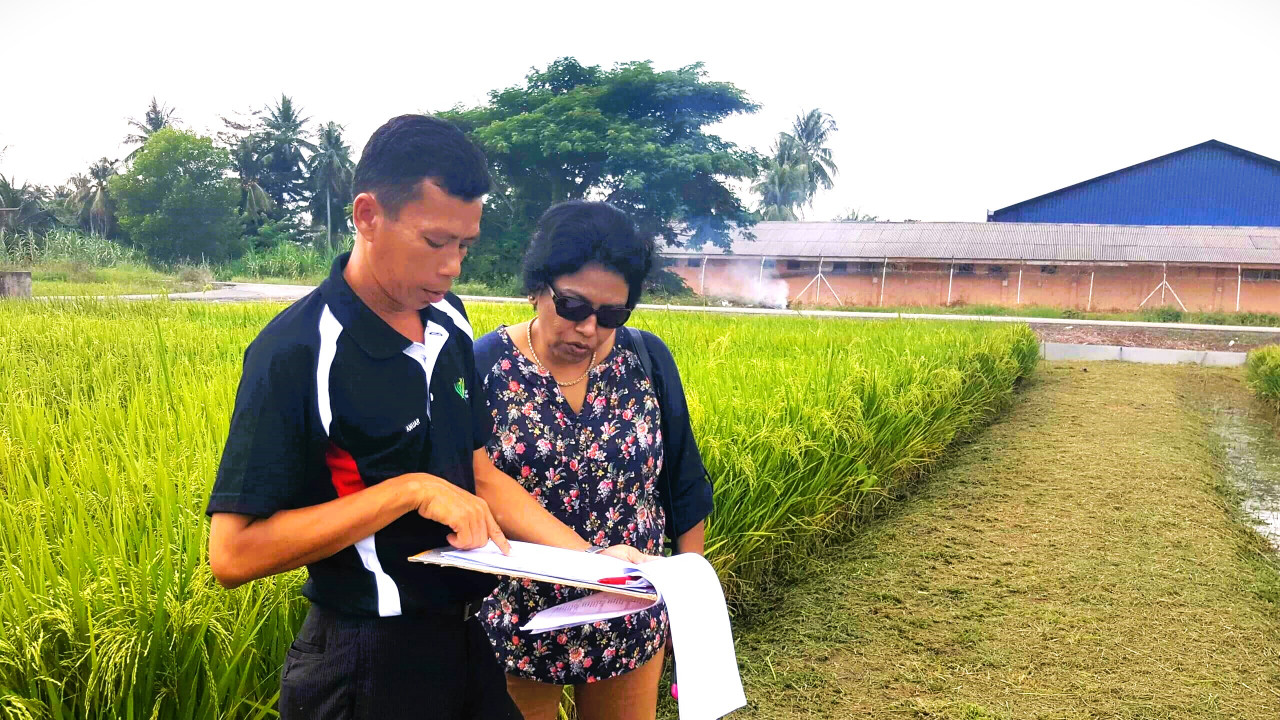
“It involves the transfer of genes controlling a specific trait from a donor plant into an elite cultivar. The parent with the desired trait (donor parent) provides the desired characteristic and may not perform as well as an elite cultivar (recurrent parent).
“The first generation and the progenies in the subsequent generations are repeatedly backcrossed to the elite parent used in the cross. This cycle of matching backcross progenies to the recurrent parent continues until a new line that is identical to the recurrent parent, but with the desired gene or trait from the donor parent is created.
“The backcrossing process was accelerated using a marker-assisted backcrossing (a first in the country) to facilitate foreground and background selection.”
She said after the surprise discovery of the new red rice hybrid, it was approved for field trials and the research team conducted more laboratory assays to determine its string of quality attributes and safety profile.
Primera Red Rice (UKMRC9)
The newfound hybrid named Primera Red Rice (codenamed UKMRC9) was eventually approved for commercial sales in 2017. It is now marketed as Primera Red Rice in 1,200 retail outlets including Village Grocer, Go Fresh, Tesco-Lotus, Aeon Big, Giant, Mydin, C-Mart, Lulu Hypermarket and The Store.
Wickneswari said Primera Red Rice stands out among other rice varieties because of its low glycaemic (glucose) index (GI). The GI range for red rice is 41 to 48 and for any food to be categorised as low GI food, its GI value must be 55 or less.
“For this reason, Primera Red Rice is an ideal option for diabetic and heart patients as it helps in reducing sugar spikes after meals.
“A low GI is an important feature in all foods as it is slow and stable during digestion while at the same time, it gives a sense of ‘full-stomach satisfaction’ even after diabetics keep to the half-cup portion recommended by dieticians.
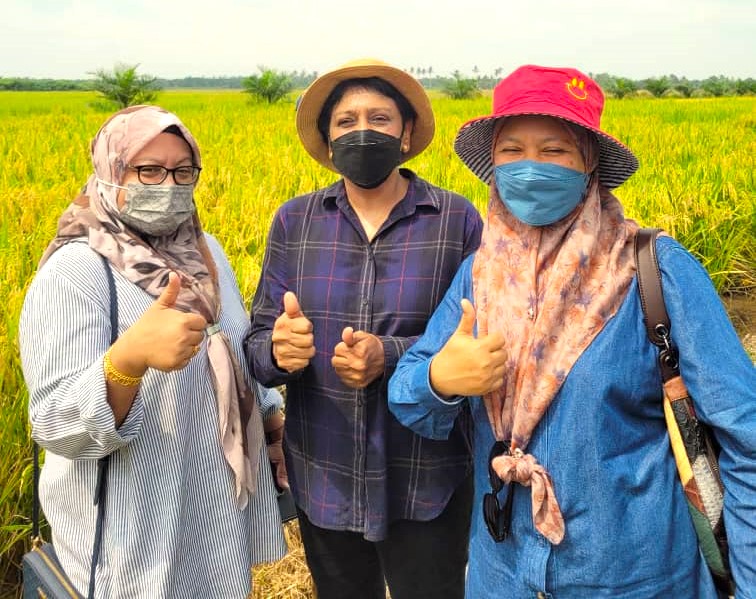
“This means that diabetics will be able to keep to the half-cup portion to manage their glucose levels well and without feeling hungry or being tempted to go for a second helping. A low-carb portion means low sugar spikes after meals which is very crucial,” added Wickneswari.
Lower risk of cardiovascular disease
Primera Red Rice comes naturally infused with anthocyanin, a type of antioxidant that lowers the risk of cardiovascular disease. It has a palatable taste with a slightly nutty flavour and is rich in Zinc.
Studies have shown that Zinc supplementation reduces fasting blood glucose (FBS) and two-hour postprandial (after meal) blood glucose and HbA1c in patients with diabetes.
Other studies have established zinc supplementation helps reduce total cholesterol, low-density lipoprotein (LDL or bad cholesterol) and triglycerides in both – patients with and without diabetes.
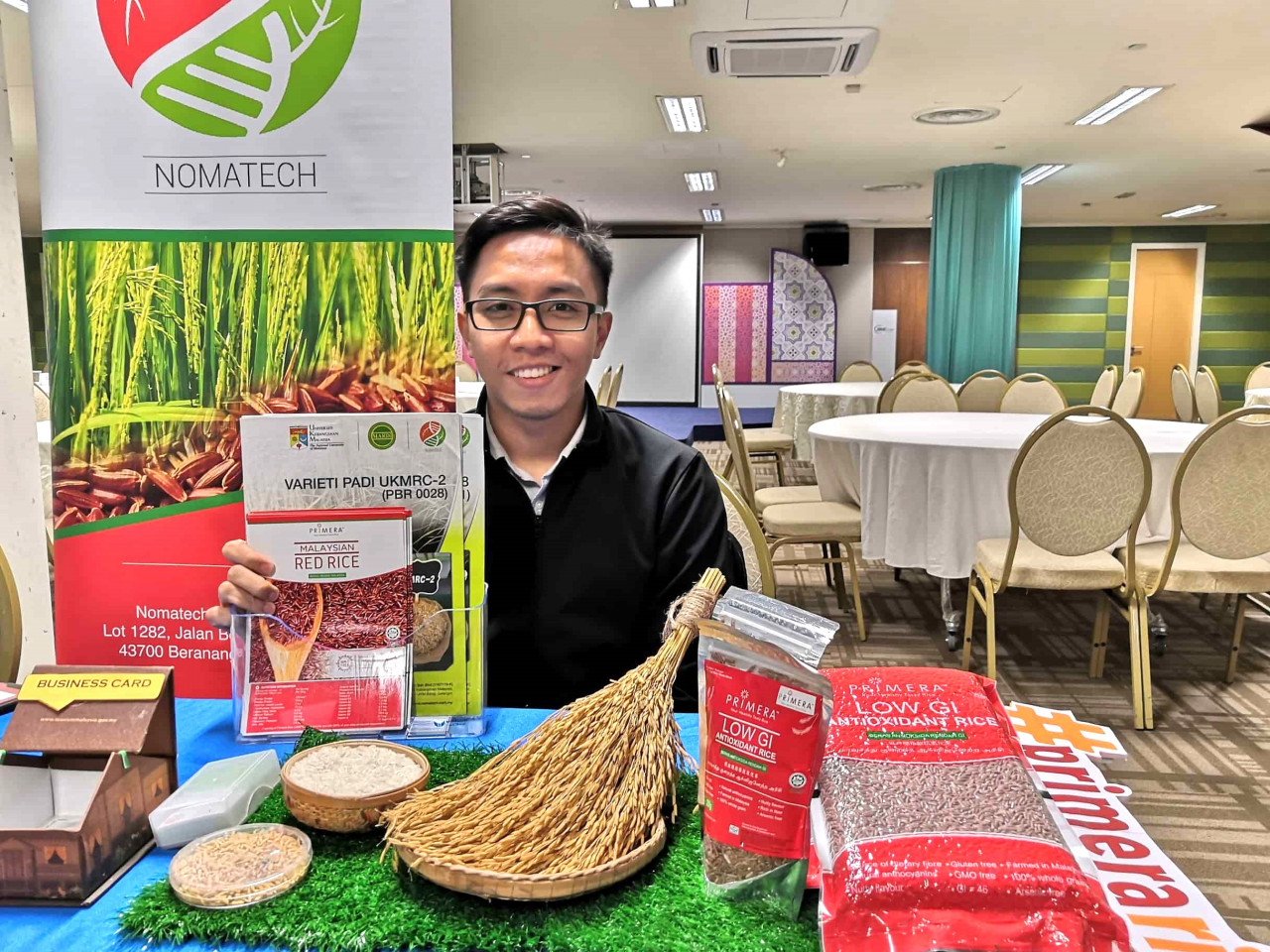
According to Wickneswari, zinc is a nutrient found throughout the body. It gives a boost to the immune system and helps with metabolism function. She said Zinc is also important to wound healing and one’s sense of taste and smell.
“Primera Red Rice is a healthy wholegrain option and it is not a genetically modified food crop.”
Wickneswari explains: “A whole grain is a cereal with its kernel made up of bran layer, endosperm, and its germ remains intact after the process of removing its hull. It does not undergo the next rice process of polishing.
"A significant amount of whole grain in the diet becomes a source of insoluble fibre which can hold water in the gut and help to prevent constipation and promotes gastrointestinal health.
“Apart from fibre, the whole grain contains B vitamins, minerals such as selenium, iron, magnesium, phenolic compounds, and phytic acid.
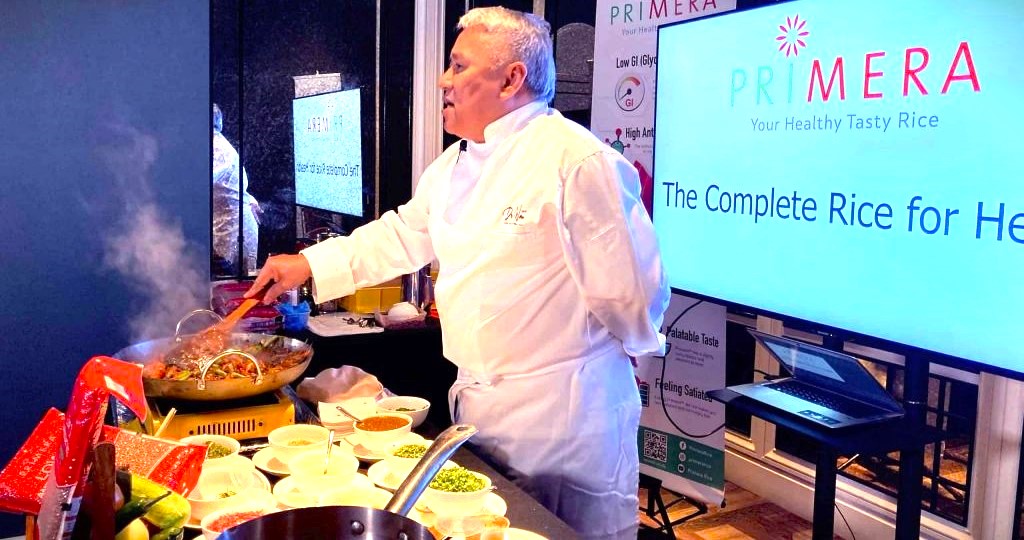
“Eating whole grains reduces the metabolic risk factors for type 2 diabetes and coronary heart disease,” she added.
According to her, the National Dietary Guidelines of many countries advocate the inclusion of whole grains in the diet for optimal health benefits.
“Clinical trials are currently ongoing to further determine the efficacy of Primera Red Rice on diabetic patients at the medical faculty of UKM. Another similar trial is also being conducted by Dr Tilkavati Karupiah of Taylor’s University. The outcome of these two trials will soon be known,” said Wickneswari.
Road to commercialisation
Indulging in research and unleashing innovative ideas is the ultimate goal of every scientist. What transpires in the laboratory must translate into products that can be retailed in the market for the benefit of society. And this is one ultimate test every scientist is confronted with.
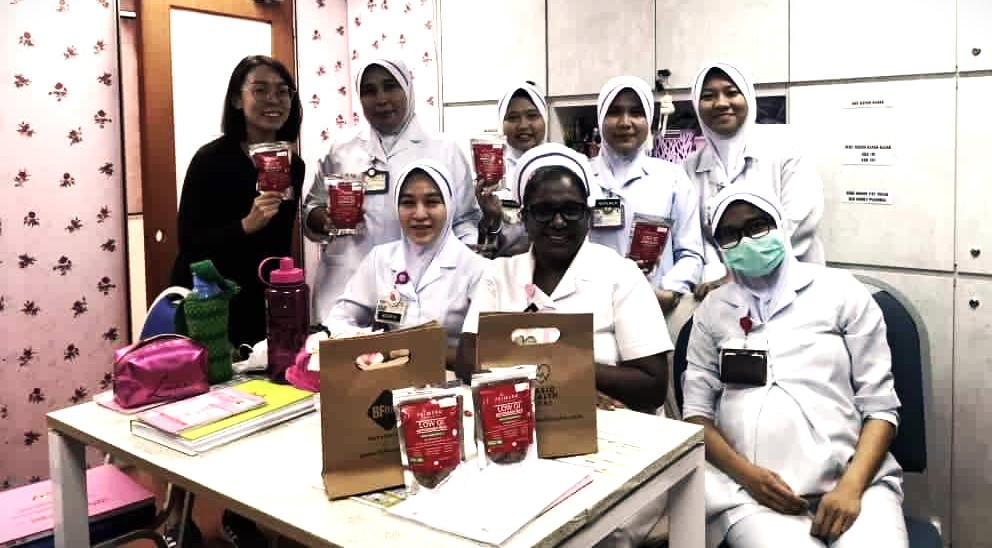
Indomitably, Wickneswari and her researchers have risen to this challenge.
Wickneswari is not only walking the corridors of academia today, but she has established a private limited company, Nomatech Sdn Bhd where she holds court as a shareholder and managing director. Nomatech is marketing Primera Red Rice throughout the country, with plans to export it to Japan, the Middle East and Europe.
“The company apart from being the first local company to commercialise crossbred red rice is fundamentally an agricultural company focussing on research, development and innovation. We want to specialise in providing and commercialising agricultural research and provide agricultural-based services to stakeholders including padi farmers.”
She said there have been various attempts to improve crop yield. However, doing so in a manner that doesn't burden farmers is still a challenge.

“Take the example of rice itself. Rice farming is usually aligned with poverty, where farmers have marginal lands to cultivate rice. To empower rice farmers, science-based companies need to develop varieties of rice that uplift the farmer's income and, at the same time, is accessible and affordable for the general population.”
She said the UKMRC9 red rice grown in Nomatech’s padi fields in Perlis and Kedah is high yielding and is cultivated and harvested twice a year while being disease resistant. This uplifts the poor and marginalised farmers who can earn an appreciable income by opting to grow this newly-minted red rice.
In 2020, Nomatech received a National Technology and Innovation Sandbox (NTIS) grant to expand its area of cultivation and introduce new packaging sizes for the retail market and bulk purchases.
With this grant, Nomatech can also provide researchers, innovators, startups, and high-tech entrepreneurs special facilities to test their products, services, business models, and delivery mechanisms in a dynamic live environment.
More recently, Asia Business Outlook magazine in a cover piece highlighted Nomatech as being the Top 10 Agriculture Consultants in Asia.
Meanwhile, as Wickneswari and her research team gain all round applause for their newly minted Malaysian grain, cash registers are “clinking in” the ringgit and sens with health-conscious housewives warming up to this healthier option. This is a living testimony, reminiscent of a philosophical Asian metaphor “that all of life is seen in a grain of rice”. – The Vibes, February 18, 2023



.png)


